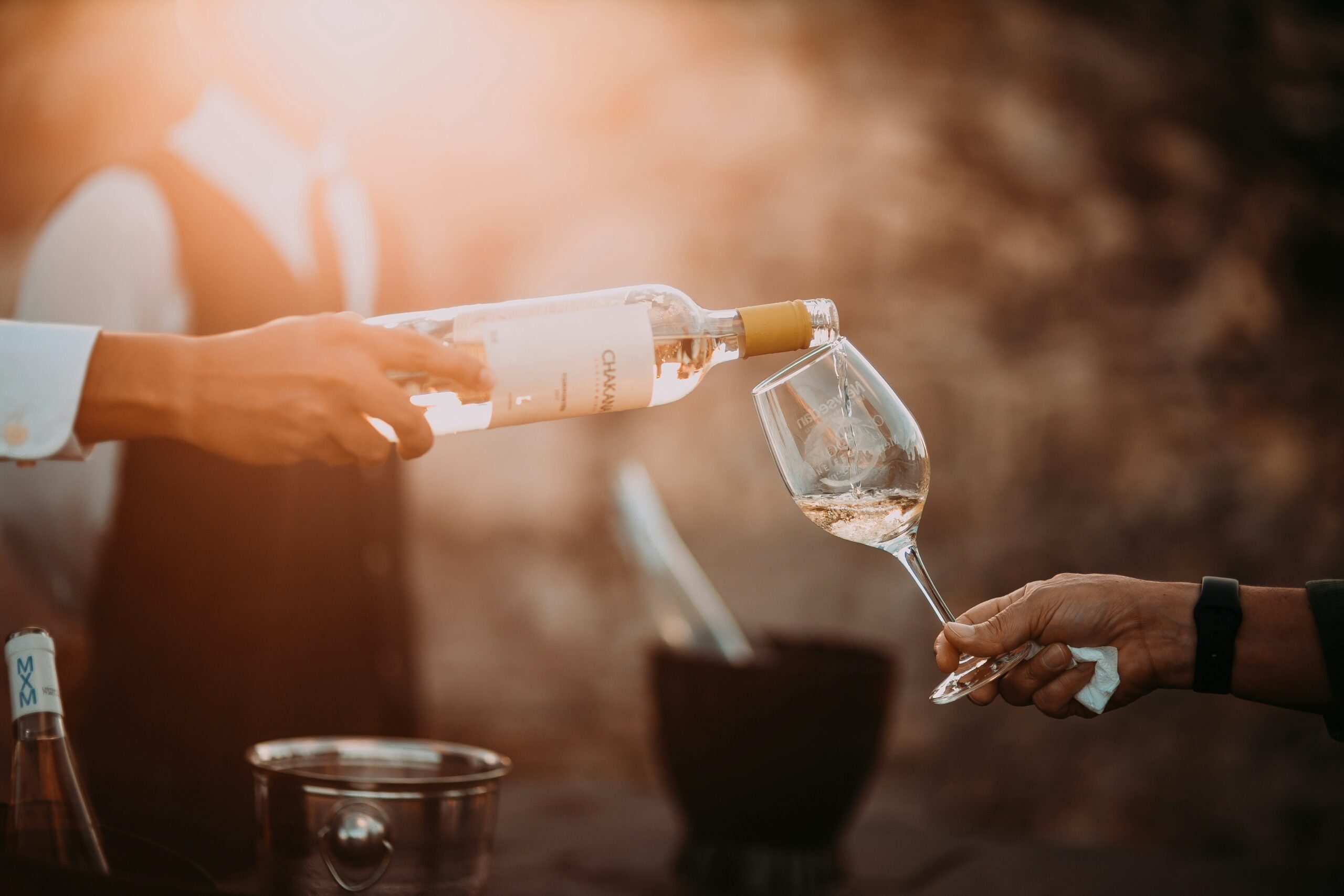
Feeling lost in the world of wine? Don’t worry! Forget about feeling out of place at a tasting – appreciating a good glass is an open and inviting experience for everyone. This guide will introduce you to the “Five S’s” of wine tasting, a simple approach to transform every sip into a delightful discovery!
 I. See: Unveiling the Wine’s Visual Story
I. See: Unveiling the Wine’s Visual Story
Our exploration begins with a visual assessment – the first impression a wine makes. Hold your glass aloft against a well-lit background. A plain white tablecloth or a white wall work wonders, allowing the wine’s color to take center stage. Here, the interplay of light with the liquid unveils a wealth of information:
- Color Spectrum: Red wines offer a vibrant tapestry. A youthful Pinot Noir will showcase a clear, almost translucent ruby hue, hinting at its light-bodied nature. As the wine ages, the ruby deepens, acquiring garnet or brick-red tinges. Mature Riojas or Barolos may even display a touch of brown at the rim, signifying advanced age. Cabernet Sauvignon, known for its boldness, often exhibits a deep, inky purple color when young, gradually softening to a more nuanced plum or mulberry hue with maturity.
- White Wine Nuances: The world of white wines is equally captivating. A youthful Sauvignon Blanc might gleam with a pale straw color, suggesting its crisp and refreshing character. As the grape ripens under warmer sunshine, the color deepens to a pale or greenish-gold, hinting at richer flavors. Chardonnay, depending on the winemaking process, can range from a bright, lemony yellow to a deeper gold, sometimes even displaying a hint of amber. This spectrum reflects the influence of factors like grape variety, ripeness, and oak aging. Oaked Chardonnays, for instance, will typically show richer golden tones compared to unoaked versions.
- Rosé’s Playful Palette: Rosé wines, those delightful blushes between red and white, offer a charming spectrum. A Provence rosé might display a pale, salmon-pink color, hinting at its delicate character. Deeper shades of pink, approaching a vibrant watermelon hue, might suggest a bolder style from regions like Zinfandel-dominant California rosés.
- Clarity Matters: While color speaks volumes, a wine’s clarity is equally important. A clear, transparent wine is generally desirable, indicating proper filtration and stability. However, some styles, particularly unfiltered reds like those from Beaujolais, might exhibit a slight haze. This doesn’t necessarily indicate spoilage, but simply reflects the presence of natural grape particles that haven’t been removed through filtration. Be wary, however, if the cloudiness is pronounced or accompanied by an off-putting odor. This could be a sign of spoilage.
- Viscosity Unveils Texture: Finally, the act of swirling the glass offers another visual clue – the “legs” of the wine. These are the streaks of liquid that cling to the sides of the glass as you swirl. Thicker, slower-moving legs can suggest a higher alcohol content or a wine with more residual sugar, which leaves a thicker, more viscous feeling on the palate. Conversely, thinner, faster-moving legs might indicate a lighter-bodied, drier wine.
 II. Swirl: Releasing the Wine’s Hidden Aromas – A Dance of Air and Aroma
II. Swirl: Releasing the Wine’s Hidden Aromas – A Dance of Air and Aroma
The swirl is more than just a graceful gesture; it’s a catalyst that unlocks the wine’s hidden treasures – its aromas. Swirling achieves two critical functions:
- Aeration: The Awakening Kiss of Oxygen: Wine, like a shy socialite, can be initially reserved when it comes to releasing its aromatic secrets. Swirling gently increases the wine’s surface area, allowing oxygen to interact with the aromatic compounds trapped within the liquid. This “awakening kiss” stimulates the volatile molecules, prompting them to rise from the wine and dance towards your waiting nose. Imagine swirling as a gentle waltz, coaxing the shy scents to reveal themselves.
- Unveiling the “Legs”: A Glimpse into the Wine’s Body: As you swirl, cast another glance at those fascinating “legs” – the streaks of wine that cling to the sides of the glass. While the speed of their descent can offer clues about the alcohol content (slower for higher alcohol), the swirl also influences their behavior. A vigorous swirl might create thicker, more persistent legs, whereas a gentle swirl might produce thinner, faster-falling streaks.
However, the true magic of the swirl lies in its ability to unlock a symphony of aromas. Here’s how to maximize your olfactory experience:
- The Gentle Swirl: Start with a gentle, circular motion in the lower part of the glass. Imagine you’re tracing a small circle at the bottom of the glass. This initial, controlled swirl helps to gently release the more volatile, fruit-forward aromas. Think of these as the high notes in a musical composition – the bright, fresh scents that grab your attention first.
- Release the Mid-Tones: As you gain confidence, gradually widen the circle of your swirl, incorporating most of the wine in the glass. This allows more air to interact with the wine, releasing a broader spectrum of aromas. Here, you might encounter the “mid-tones” of the wine’s bouquet – floral notes, herbal hints, or even subtle spice characters. These add complexity and depth to the overall aromatic profile.
- A Deeper Exploration: For a more in-depth exploration, tilt the glass slightly towards your nose and take a short, shallow sniff just above the rim. This initial sniff focuses on the primary aromas, those derived directly from the grape variety itself. Imagine the classic aromas of Sauvignon Blanc – think grapefruit, gooseberry, and grassy notes – or the characteristic black cherry and plum notes of a young Cabernet Sauvignon.
- Delving into the Depths: Now, for the grand finale! Hold the glass by the stem and plunge your nose slightly deeper, burying it just inside the rim. Take a deeper, more deliberate sniff. Here, you’ll encounter the secondary aromas, those influenced by the winemaking process. Think of the toasty, vanilla notes imparted by oak aging in Chardonnay, or the yeasty, bready characters resulting from fermentation with Champagne grapes.
 III. Sniff: A Symphony of Scents – Unveiling the Wine’s Essence
III. Sniff: A Symphony of Scents – Unveiling the Wine’s Essence
With the wine swirled and aerated, the stage is set for a captivating olfactory experience – the sniff. Here, you become a detective, deciphering the aromatic clues that whisper tales of grape variety, winemaking techniques, and even the wine’s age. Let’s delve deeper into the art of sniffing and unlock the hidden language of aromas:
The First Impression: A Glimpse into the Grape’s Heart
Begin with a short, shallow sniff at the rim of the glass. Imagine cupping your hands around a fragrant flower – gentle and controlled. This initial sniff focuses on the primary aromas, those derived directly from the grape variety itself. These are the vibrant, youthful notes that tell the story of the grape at harvest.
- Reds: For red wines, the primary aromas might be a symphony of red and black fruits. A young Pinot Noir might enchant you with notes of cherry, raspberry, and plum, while a Cabernet Sauvignon might boast of blackcurrant, blackberry, and cassis. Explore the playful spiciness of Syrah or the intriguing herbal hints of Cabernet Franc.
- Whites: The world of white wines offers its own fragrant stories. Sauvignon Blanc is known for its refreshing citrus notes – think grapefruit, lime, and gooseberry – often accompanied by grassy or herbal characters. Chardonnay, depending on its origin and winemaking style, might showcase a spectrum of aromas from tropical fruits like pineapple and mango to stone fruits like peach and apricot. Unoaked Chardonnays will typically emphasize these primary fruit notes, while oak-aged versions might reveal secondary aromas like vanilla, toast, and butter.
Delving Deeper: Unveiling the Winemaker’s Touch
Once you’ve grasped the essence of the grape variety, take a deeper sniff, burying your nose slightly into the glass. Here, you’ll encounter the secondary aromas, those influenced by the winemaking process. These are the artisans’ whispers, hinting at the techniques employed by the winemaker.
- The Art of Oak: Oak barrels are a favored tool of many winemakers, imparting distinctive characteristics to the wine. A whiff of vanilla, toast, or caramel might suggest oak aging. The intensity of these notes will depend on the type of oak used, the charring level, and the duration of aging.
- Fermentation’s Footprint: The fermentation process also leaves its aromatic mark. Wines fermented with Champagne grapes, for example, might exhibit yeasty or bready notes. Some red wines might display a touch of earthiness or barnyard character, influenced by the specific yeast strains used.
A Journey Through Time: Tertiary Delights (for aged wines)
For truly mature wines, a third sniff might reveal a final layer of aromas – the tertiary aromas. These delightful complexities develop over time in the bottle, whispering tales of the wine’s age and evolution.
- Evolving Elegance: As red wines age, the primary fruit notes mellow and give way to more subtle tertiary aromas. Imagine hints of leather, earth, tobacco, or even a touch of dried fruit. These nuances add depth and complexity to the overall aromatic profile, reflecting the wine’s journey through time.
- The Delicate Dance of White Wines: Aged white wines can also develop intriguing tertiary characters. Some Rieslings, for example, might show hints of honey or petrol with age. Chardonnay can take on a more complex profile, with nutty or lanolin notes emerging alongside the mellowed oak and fruit characters
 IV. Sip: The Taste Test – A Symphony of Flavors on the Palate
IV. Sip: The Taste Test – A Symphony of Flavors on the Palate
The much-anticipated sip marks the culmination of your sensory exploration. Here, sight, smell, and taste converge to create a unified experience, painting a complete picture of the wine on your palate. This is where the detective work from sniffing translates into a delicious confirmation (or surprise!). Let’s delve deeper into the elements that define the taste of a wine:
The Initial Greeting: Sweetness or Dryness?
As the wine first hits your tongue, take note of the sweetness level. Is it dry, semi-dry, or sweet? Dry wines have little to no residual sugar, leaving a clean and refreshing sensation on the palate. Think of a Pinot Noir or a Sauvignon Blanc. Semi-dry wines have a touch of residual sugar, offering a slightly sweet yet balanced character. Riesling or some rosés often fall into this category. Sweet wines, on the other hand, have a more pronounced sweetness, like a late-harvest Riesling or a Sauternes.
Echoes of the Nose: Flavors Revealed
Now, identify the main flavors of the wine. Do they correspond to the aromas you detected earlier during sniffing? This is where the magic happens – the harmony between your nose and palate.
- Reds: For red wines, you might encounter a burst of red and black fruit flavors that mirror the primary aromas – think of cherry, plum, or blackberry. Additionally, tannins, naturally occurring compounds found in red grape skins and seeds, contribute to the wine’s texture and can create a drying sensation on the tongue. The level of tannins varies depending on the grape variety and winemaking techniques. Cabernet Sauvignon is known for its bold tannins, while Pinot Noir typically exhibits softer, more subtle tannins.
- Whites: White wines offer a vibrant spectrum of flavors. A Sauvignon Blanc might showcase its signature citrusy notes like grapefruit or lime on the palate, along with refreshing acidity that makes your mouth water. Unoaked Chardonnays might emphasize their primary fruit flavors like apple or pear, while oak-aged versions might introduce flavors of vanilla, toast, or butter alongside the fruit.
The Textural Experience: Mouthfeel Matters
Beyond taste, focus on the texture of the wine, also known as mouthfeel. Is it light and refreshing, or full-bodied and rich? This sensation is influenced by the wine’s alcohol content, body weight, and the presence of tannins in reds.
- Light-Bodied Delights: Light-bodied wines, often with lower alcohol content, feel lighter and more delicate on the palate. Think of a Pinot Noir or a Beaujolais Cru.
- Full-Bodied Grandeur: Full-bodied wines, with higher alcohol and richer body weight, have a more substantial presence on the palate. Cabernet Sauvignon or a well-aged Rioja would be good examples.
The Balancing Act: Acidity’s Refreshing Role
Acidity is the backbone of a wine, providing a refreshing and lively character. It’s the zing you experience on your tongue, similar to biting into a citrus fruit. Acidity plays a crucial role in balancing the sweetness of the wine and contributes to its overall structure and ageability. A well-balanced wine showcases a harmonious interplay between sweetness and acidity.
A Lasting Impression: The Finish
Finally, pay attention to the finish, the aftertaste that lingers on your palate after you swallow. Is it long and lingering, or short and fleeting? A long finish, often associated with well-balanced and complex wines, is generally considered desirable.
 V. Savor: The Art of Reflection and Appreciation
V. Savor: The Art of Reflection and Appreciation
The final “S” in our exploration isn’t about a physical action, but rather a mindful contemplation – the art of savoring. This is where the various sensory experiences you’ve encountered – the visual clues, the captivating aromas, and the symphony of flavors on your palate – come together in a harmonious whole. Here’s how to elevate your wine appreciation by taking a moment to truly savor the experience:
The Tapestry of Sensory Impressions: A Unified Experience?
Reflect on how the different elements of the wine – sight, smell, and taste – come together. Did they create a balanced and complete experience? Imagine a beautiful tapestry. Each element – color, clarity, viscosity, aromas, and flavors – contributes a thread to the overall picture. A well-balanced wine showcases a harmonious interplay between these elements, where the aromas you detected translate to flavors on the palate, and the visual characteristics hint at the wine’s body weight or sweetness level.
Meeting Expectations: Surprise or Confirmation?
Did the wine live up to your expectations? Did it surprise you in any way? Perhaps you were expecting a bold and powerful Cabernet Sauvignon based on its deep color, but the taste surprised you with unexpected notes of green pepper. Maybe a Pinot Noir’s delicate ruby hue led you to believe it would be light-bodied, but it surprised you with a surprising richness on the palate. These unexpected moments are part of the joy of wine exploration. Use them as learning experiences, refining your understanding of how visual cues and aromas translate to taste.
The Symphony and the Song: Does the Wine Pair with the Food?
If you’re enjoying the wine with a meal, consider the food pairing. Do the flavors of the wine complement or contrast with the dish? Food and wine can be magical partners, enhancing each other’s flavors. A bold red wine can stand up to a hearty steak, while a crisp Sauvignon Blanc might beautifully complement a seafood dish. Understanding basic pairing principles can elevate your dining experience. For instance, consider matching bold wines with bold flavors, and lighter wines with lighter dishes. Acidity in the wine can cut through the richness of fatty foods, while sweetness in the wine can complement spicy dishes. Experiment and discover pairings that tantalize your taste buds!
Sharing the Journey: Recommend or Reminisce?
Finally, consider whether you would recommend this wine to others. Think about your personal preferences and who might share your taste. If you enjoyed a light and fruity Pinot Noir, you might recommend it to a friend who enjoys easy-drinking wines. If you were particularly impressed by a complex aged Bordeaux, you might suggest it to someone who appreciates bold and nuanced wines. Wine appreciation is a social experience. Share your discoveries with friends and family, discuss your tasting experiences, and embark on new wine adventures together.
Conclusion
The world of wine awaits, and with the 5 S’s of Wine Tasting as your compass, you’re ready to embark on a delightful journey of discovery. Remember, there’s no right or wrong way to appreciate wine. Embrace the experience, experiment with different styles, and trust your palate.
For an unforgettable adventure, consider exploring renowned wine regions like Napa Valley. Imagine cruising through sun-drenched vineyards in luxurious comfort with a hired limousine service. This not only elevates the experience but allows you to focus entirely on the stunning scenery and the exquisite wines waiting to be savored. So, raise a glass, toast to the adventure that awaits, and let the 5 S’s guide you on your path to becoming a confident and discerning wine enthusiast.
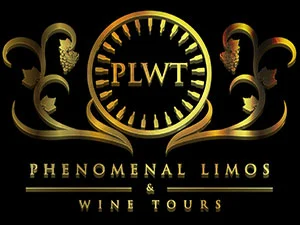
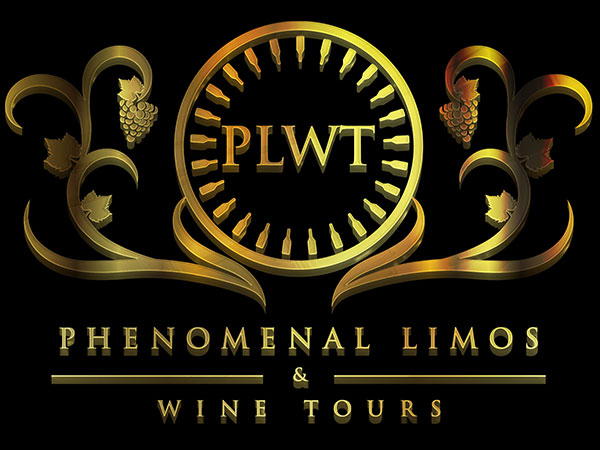
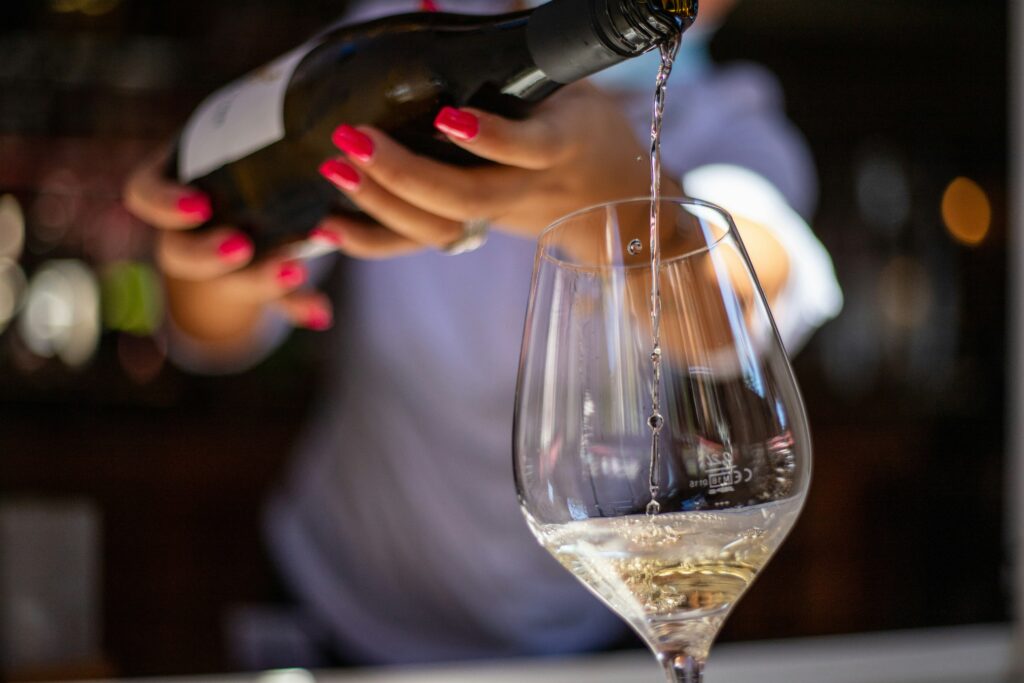 I. See: Unveiling the Wine’s Visual Story
I. See: Unveiling the Wine’s Visual Story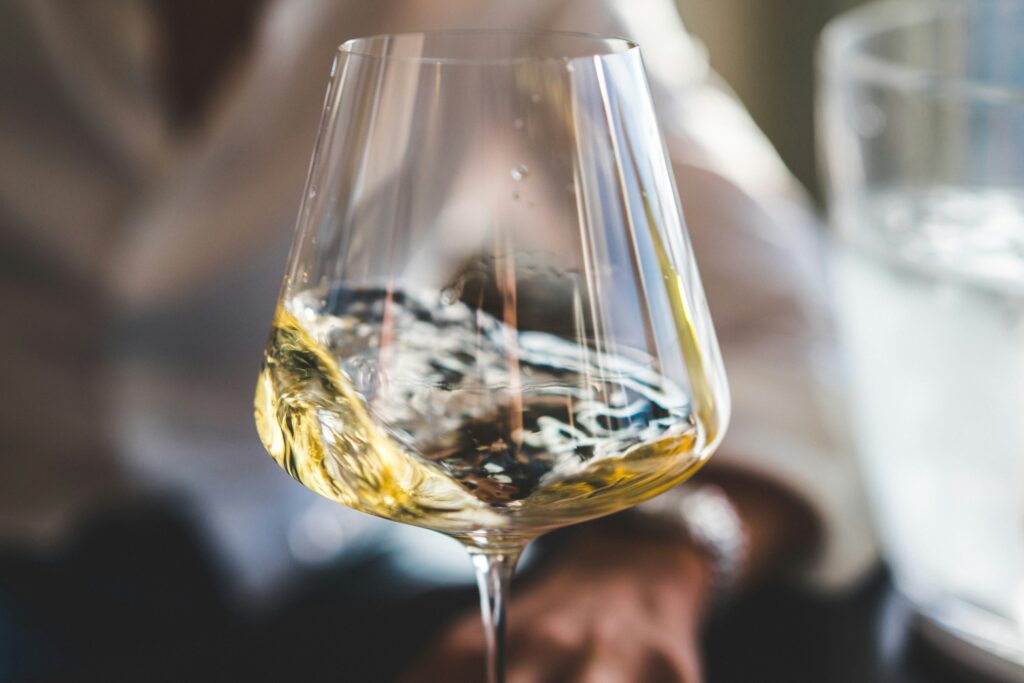 II. Swirl: Releasing the Wine’s Hidden Aromas – A Dance of Air and Aroma
II. Swirl: Releasing the Wine’s Hidden Aromas – A Dance of Air and Aroma III. Sniff: A Symphony of Scents – Unveiling the Wine’s Essence
III. Sniff: A Symphony of Scents – Unveiling the Wine’s Essence IV. Sip: The Taste Test – A Symphony of Flavors on the Palate
IV. Sip: The Taste Test – A Symphony of Flavors on the Palate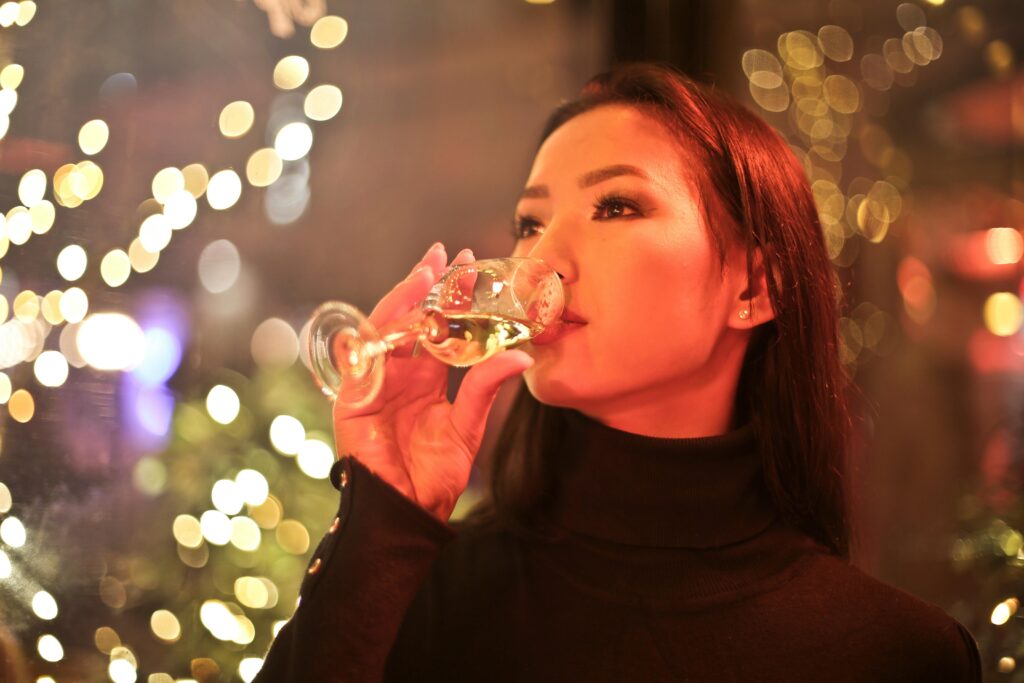 V. Savor: The Art of Reflection and Appreciation
V. Savor: The Art of Reflection and Appreciation